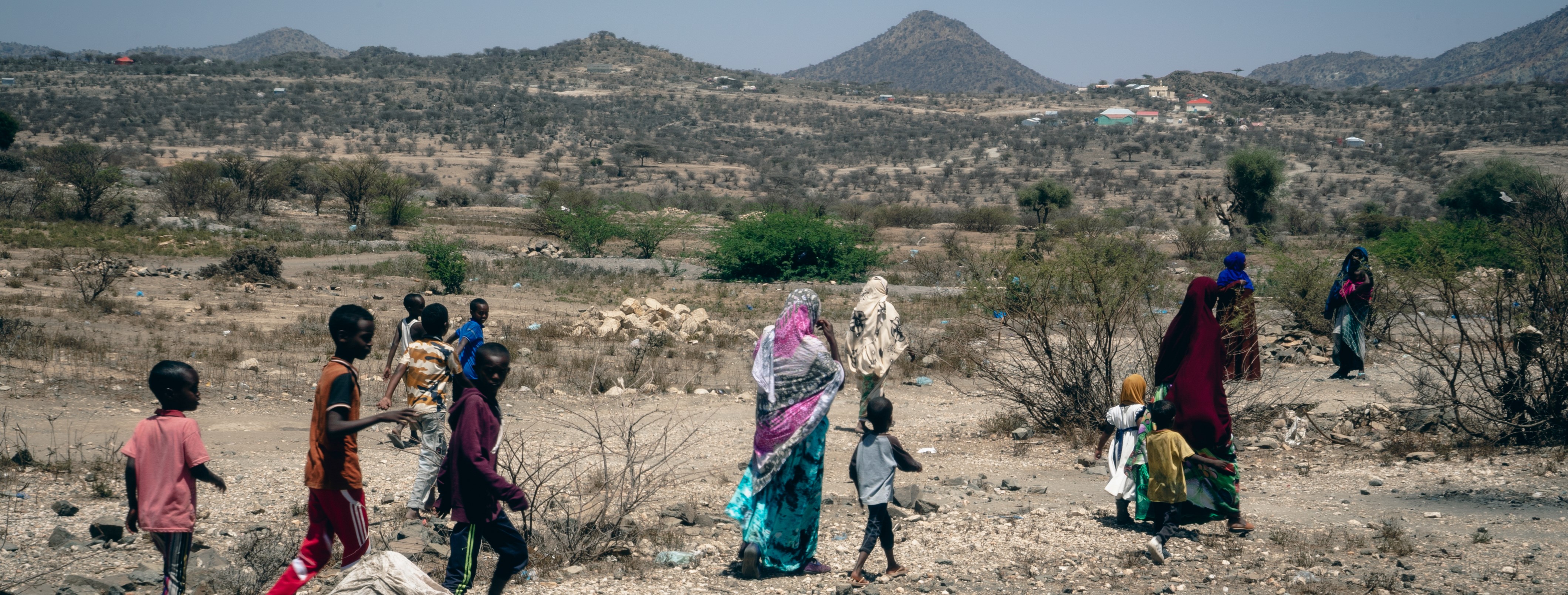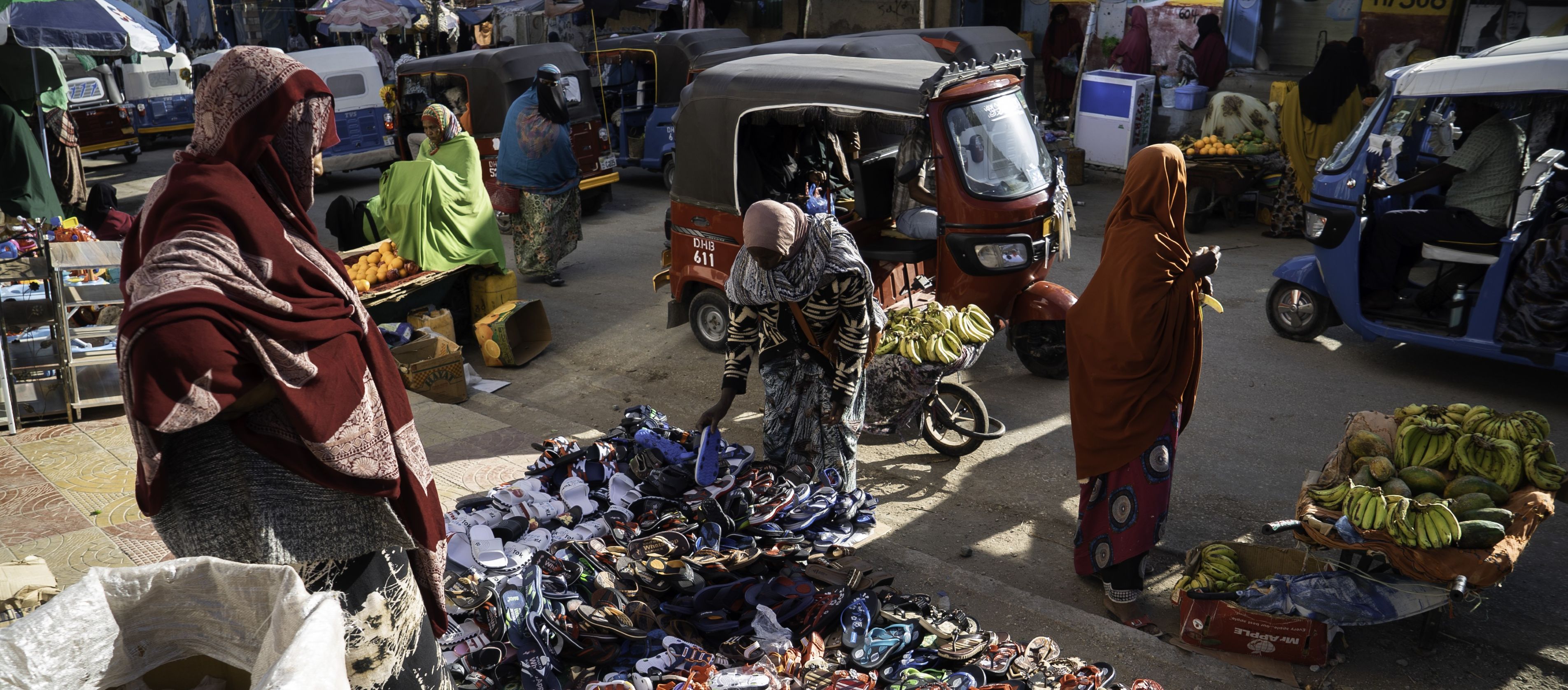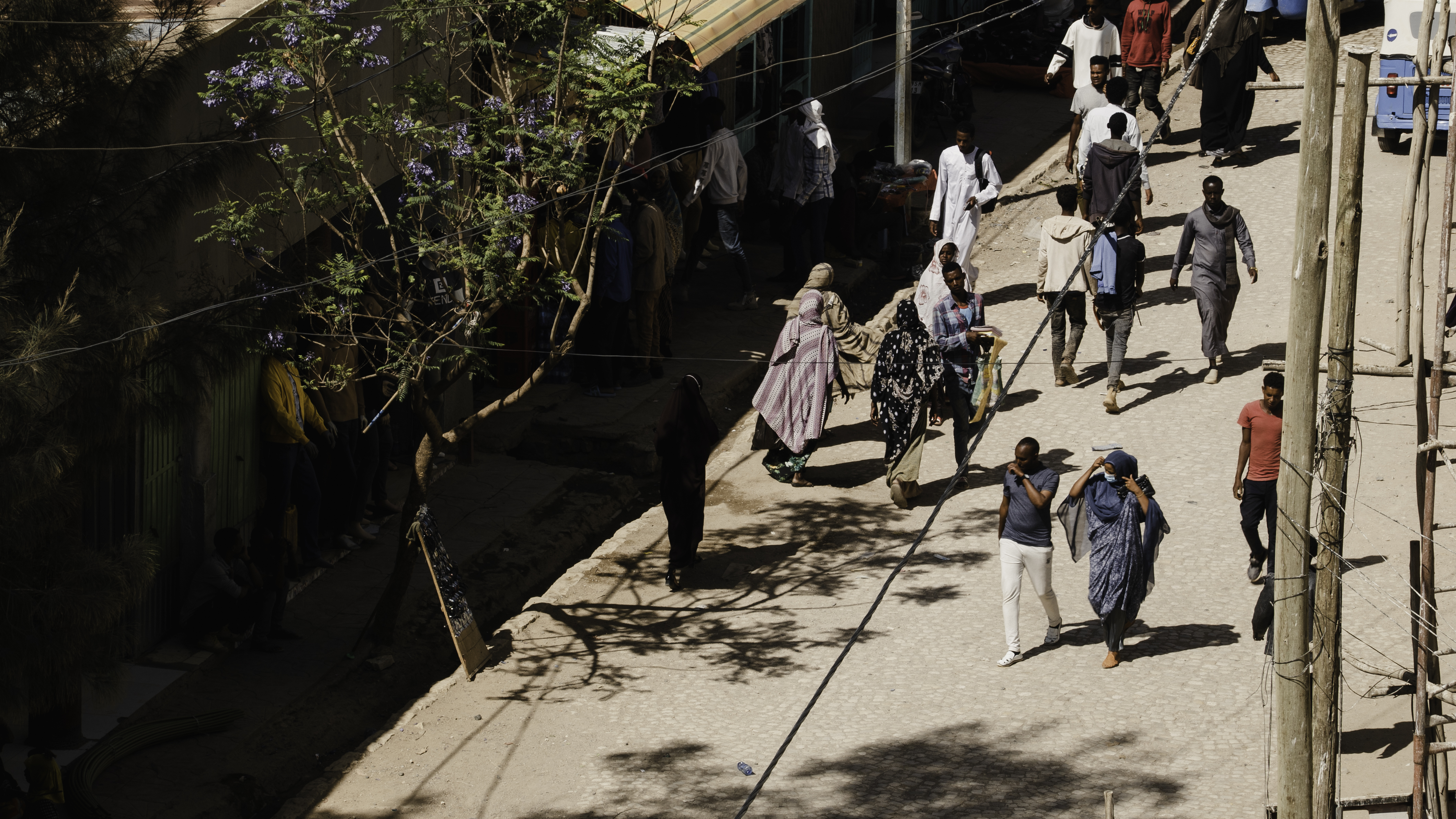In their article 'Now You See Them, Now You Don’t: Performance and the Politics of Localizing (Forced) Migration Governance in the Horn of Africa’s Secondary Cities', Dr Caroline Wanjiku Kihato and Dr Loren B. Landau explore how a Cities Alliance initiative helped municipalities and civil society in Ethiopia, Kenya, Somalia, and Uganda address forced migration challenges.
The Comprehensive Refugee Response Framework (CRRF): Inclusive Urban Development and Mobility Action was financed by the European Union Trust Fund (EUTF) for Africa and co-implemented by Cities Alliance from 2020–2023.
It addressed challenges secondary cities in the Horn of Africa face as they grapple with the pressures of urbanisation and increasing numbers of displaced persons. The cities included Arua and Koboko (Uganda), Assosa and Jigjiga (Ethiopia), Kakuma-Kalobeyei (Kenya), and Gabiley and Borama (Somalia).
The CRRF initiative worked from the explicit position that beyond short-term humanitarian aid, assisting displaced populations means strengthening the cities where they live.
Dr Kihato and Dr Landau
The insights in this article respond to one component of the project, namely the establishment of a regional network and dialogue for cities to share best practices on integrating refugees and displaced people. Both authors served as independent experts for the initiative, and their findings are based on critical and participant observations conducted throughout the project.
In the article, they suggest that in ambiguous and resource-scarce political environments, network success rests on supporting two 'frontstages' and a shared 'backstage.'
Frontstage 1: Authorities “visibilise” refugees to attract funding and national support while shaping national-level norms.
Frontstage 2: Authorities make refugees “invisible” within their own development strategies, integrating displaced populations into urban planning through data collection, service investments, and inclusive strategies.
Backstage: In an experimental and collaborative backstage, municipal actors, local communities, and representatives of the displaced share resources and workshop varied scripts for their respective audiences.

Key findings
- Using the possibilities of displacement to build broader planning and administrative (and advocacy) capacity is more likely to create lasting effects that can respond simultaneously to displacement and local development.
- Even in seemingly migrant-hostile governance contexts, there are openings for more inclusive policies and developmental actions that can benefit refugees and their hosts. By creating safe spaces for discussion, providing resources and insights, and assisting authorities to hone their scripts and delivery, the network expanded a productive backstage. Although largely invisible to the intended audiences, it amplified the voices of local authorities and partners.
- While supporting collective responses, the network also promoted an approach encouraging municipalities to situate their responses within particular economic and political ecosystems. The network kept its focus pragmatically on how to substantively benefit people displaced by conflict, war, and climate while simultaneously securing urban futures for long-term residents, transient populations, and more recent arrivals.
- Local policy makers faced the challenge of influencing national policies on development, migration, and displacement in contexts where national government policies were unclear or increasingly securitised. However, there are also opportunities to be found by operating in grey zones where policy and authority are poorly defined. Through a careful reading of ambiguities in the law and policy, county authorities in Turkana County, Kenya were able to work with network partners to craft scripts that ultimately used the refugee presence to attract status and resources.
- The Action’s in-person network meetings and informal platforms offered what formal planning processes cannot: the possibility for refugees and policy makers to engage as equals, providing a unique platform for the genuine inclusion of voices that are often marginalised in formal political and administrative processes.
- The strategic visibility of refugees at national and global levels has been crucial in enabling municipalities to leverage resources that significantly enhance their internal capacities in finance, planning, research and advocacy. They did this through programmes that acknowledged the refugee presence but largely avoided initiatives targeted explicitly at refugees or requiring displaced populations to step forward as anything other than members of the community.
By equipping municipalities with analytical tools to assess their needs accurately and identify potential avenues for policy change, the network has played a pivotal role in enhancing their capacity for strategic planning, collaboration with stakeholders, operational effectiveness, and prospects of attracting resources from both domestic and international sources.
When you work in a group, you do things well. One hand cannot clap, but two hands can clap and make a difference.
Abdulkerim Abdurehim Hojele, Mayor of Assosa, Ethiopia
The findings are informing the Supporting Urban Integration of Displacement-Affected Communities (SUIDAC) Action, which builds on and expands the CRRF Action. SUIDAC is funded by the European Union.
The article “Now You See Them, Now You Don’t: Performance and the Politics of Localizing (Forced) Migration Governance in the Horn of Africa’s Secondary Cities” by Dr. Kihato and Dr. Landau was originally published on 6 October 2024 in Environment and Urbanization, 0(0). https://doi.org/10.1177/09562478241276707.





